Have you ever wondered:
“How do the best tennis players in the world like Federer, Nadal, and Djokovic manage to return return 150+ MPH serves from guys like Isner or Raonic?”
Or how are they always in the right position to get to seemingly unreachable balls? Or how they manage to effortlessly transition from defence to attack?
Yes, part of it is speed, part of it is talent, but a big part of the secret lies in…
…how they “watch the ball”
Their technique is learnable and it’s exactly what I’m going to teach you step-by-step in this article.
But right now you might be thinking:
“Pat, I already know how to do that, my coach tells me to watch the ball all the time”
And yes, “Watch the ball” or “keep your eye on the ball” is the most common tennis instruction ever. You’ve probably hear your tennis coach say it a hundred times.
However, watching the ball is not as straightforward as you think…
Unfortunately, “watch the ball” or “keep your eye on the ball” is not only the most used tennis instruction ever, it’s also one of the most misunderstood.
Just look at a few of the questions I get asked in person or in my newsletter and YouTube channel:
- How do you keep your eye on the ball?
- Should you watch the ball at contact point?
- How do you keep your head still during a shot?
- What does watching the ball really mean?
- How do professional players track the ball during a rally?
There are a lot of misconceptions and confusion among players (and coaches) regarding the terms “keep your eye on the ball” and “watch the ball” or “keep your head still”.
Most players don’t even realise what they’re doing wrong or understand that these terms actually mean. So before moving on here’s a introductory video from my coaching app on head position, contact point, and watching the ball:
*Make sure you subscribe to my YouTube channel to get my latest tennis tips and exercise videos.*
Alright, without further ado here is what I’ll be covering in this article. Skip to any section by clicking the links below:
- What “watch the ball” means in tennis.
- Tennis myth 1: Watch the ball at all times.
- Why it’s impossible to watch the ball at all times.
- Tennis myth 2: Watch the ball at contact and keep your head still.
- Why you don’t need to watch the ball / keep your head still at contact point.
- How to watch the ball like a tennis pro.
- How to predict your opponent’s shots in tennis.
- How to practice tracking the ball and predicting your opponent.
- Summary and tips.
- Further reading.
Okay, let’s begin with what “watch the ball” actually means in tennis and work our way from there…
What does “watch the ball” actually mean in tennis?
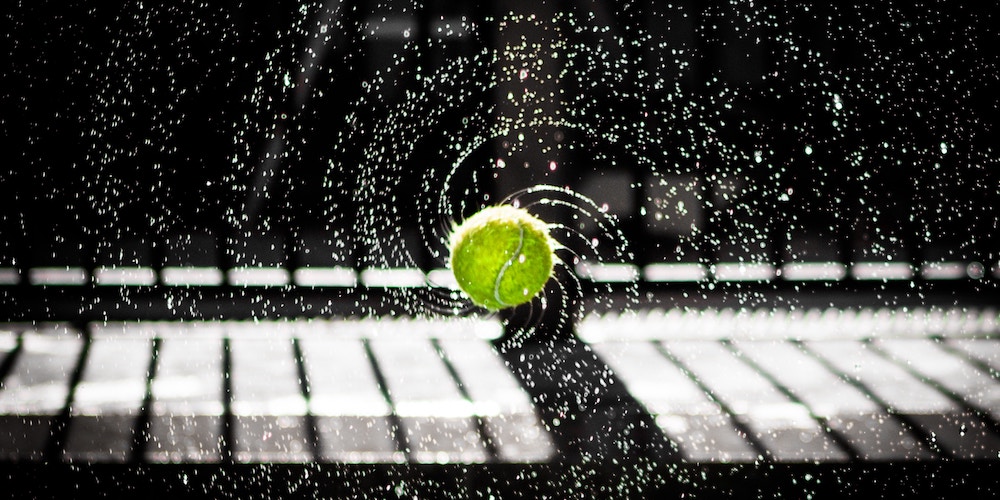
In tennis “watch the ball” or “keep your eye on the ball” is a broad term professional coaches use to instruct their pupils to do a combination of things mostly related to concentration and focus.
It is normally not used as a precise technical instruction. “Watch the ball” actually means being aware of your on-court situation and paying attention during a rally so that you can better predict and and anticipate what an opponent is going to do.
Of course you need to visually track the ball around the court in order to play. But a decent player does this automatically. It’s pretty obvious that you need to see the ball to play tennis right?
So when you hear the term “watch the ball” remember that it’s more about awareness, focus, and concentration than it is about seeing.
Now I know some of this sounds counterintuitive. But don’t worry. By the time you finish this article you’ll know exactly how to train your mind and body to watch the ball like the best pros in the world.
Before moving on to the how-to’s let’s bust some tennis myths.
Tennis myth 1: You must watch the ball at all times.
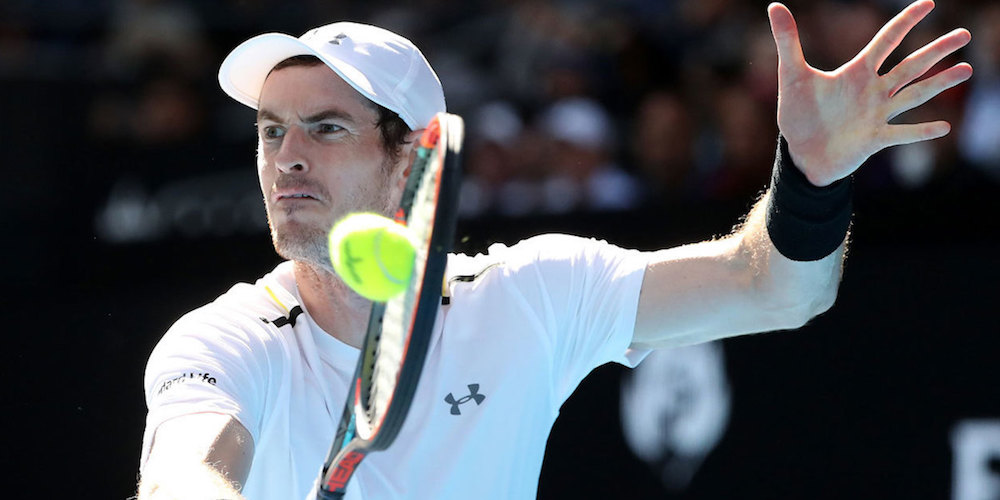
The idea that you must “watch the ball” at all times is simply not true. In fact, as I’ll demonstrate below, keeping your eye on the ball at all times is physically impossible.
This tennis myth is so prevalent because to coaches and players who don’t understand how the eyes and brain work it seems counterintuitive.
Instinctively it feels like the following happens: A) you keep your eyes focused on the ball as it travels towards, B) you react to this information and decide what to do, C) you swing and make contact with the tennis ball.
But this is not actually what happens. Let me explain:
Why it’s impossible to watch the ball at all times.
The problem with watching the ball (like in the above scenario) is that the math doesn’t add up. Let’s use a serve from a good tennis player to explain (or watch this video):
- A serve takes about 700 milliseconds to reach the returner.
- It takes the brain 500 milliseconds process this information.
- Then 25 milliseconds for the motor cortex to send a message to the arm.
- Next it takes approximately 150 milliseconds to swing the racket.
- And then the ball only makes contact with the strings for 1-5 milliseconds.
Then add to this the fact that it’s very unlikely for the ball to be visible to the human eye until it crosses the net giving the returner only has around 400 milliseconds to react.
So it takes a tennis player 675 milliseconds to process information and react but he/she only has 400 milliseconds to work with…
As you can see It is technically impossible to “watch the ball” and react when things are moving this fast. To illustrate here is a gif of what it’s like to return a 150 MPH tennis serve:
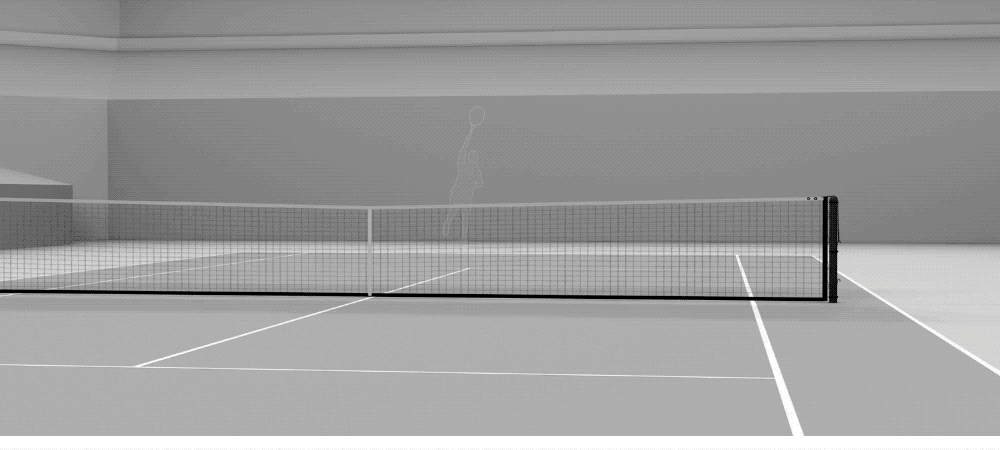
Now obviously this is just an illustration but you get the idea. Not a lot of time to work with. Blink twice and the ball is gone.
Frequently asked questions:
Should you try and watch the ball at contact point?
You can but it is not necessary. The tennis ball is only on your racket strings for 1 – 5 milliseconds. It is impossible for the human eye to see this happen so there is not real benefit.
Where should my eyes be focused at contact point?
Ideally once the ball enters your strike zone your gaze should be directed towards your opponent’s court direction. However, It is ok to keep your eyes focused at contact point so long as you don’t turn your head sideways and “lock” it in place.
Tennis myth 2: You must watch the ball at contact and keep your head still.
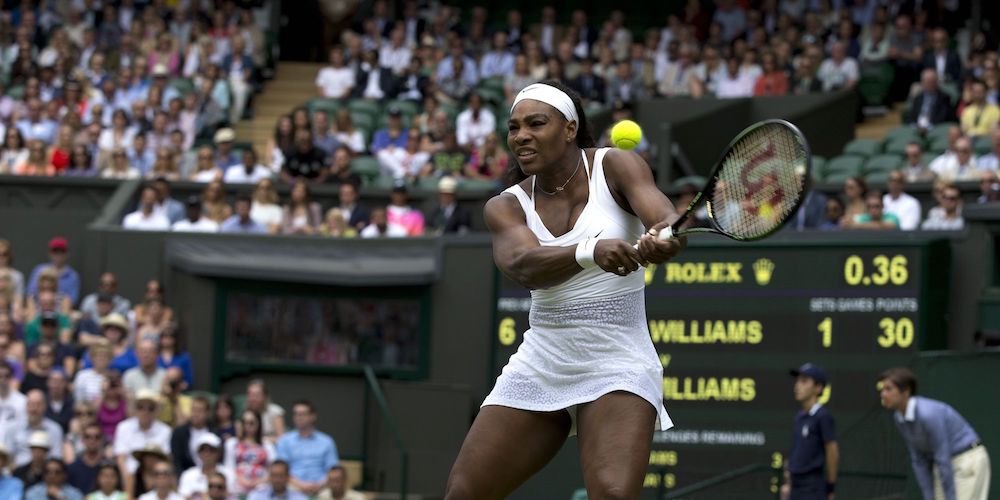
This idea has come about because many coaches confuse, combine or mix these two concepts. For example, they often think “watching the ball” and “keep your head still” are the same thing.
And because many coaches don’t understand sport biomechanics, they are often mistaken about the underlying purpose of these two instructional terms.
Why you don’t need to watch the ball and keep your head still at contact.
This tennis myth is so common because a series of faulty assumptions are made that leads to the wrong conclusion.
Faulty coaching assumptions:
- Watching the ball at all times is possible (it’s not)
- Seeing the ball at contact point will help your tennis stroke (it won’t)
- Keeping your head still is good (it is within reason)
When combined all these assumptions lead to the wrong conclusion:
- You need to turn your head sideways to watch the ball at contact point and keep it perfectly still.
On the surface this seems like good advice. Unfortunately combining “watch the ball at contact point” and “keep your head still” results in the worst of both worlds.
Why?
Because isolating your head from the rest of your body movement during a tennis stroke causes resistance in your kinetic chain. This causes serious problems with your balance, contact point and arm position. Instead of more power and control you get less. It even heightens the chance of injury.
Frequently asked questions:
Should you keep your head still during a shot?
Yes. Generally speaking you should try and keep your head still during a shot. However, this does not mean you should rigidly try and keep it perfectly locked in place. Your head movement and position needs to be allowed to move naturally before, during, and after contact point.
But shouldn’t I try and copy Roger Federer?
No you should not try and copy Federer’s head position at contact point. Federer is one of the exceptions to the rule. He’s one of the very few who is talented enough to overcome the quirks in his technique. I know it’s hard to hear but just because Federer can doesn’t mean you can.
How to watch the ball like a tennis pro.
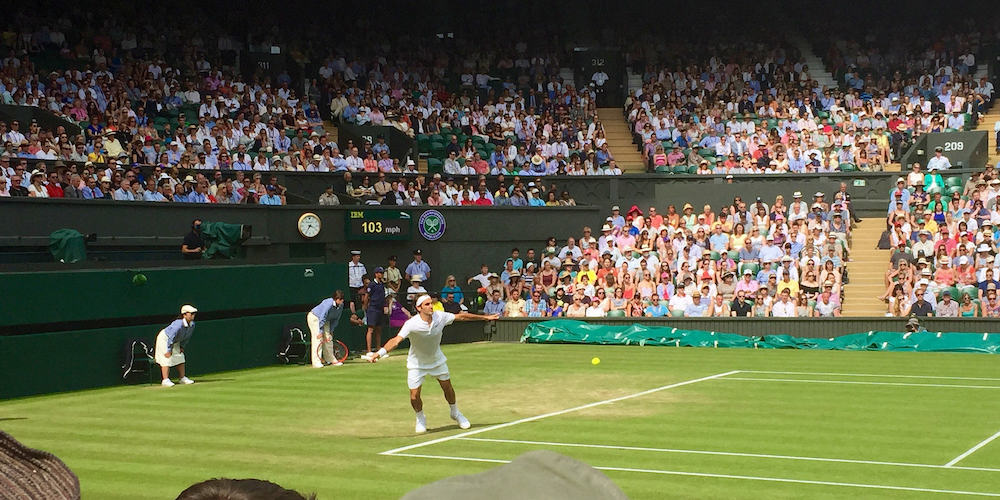
The top tennis players in the world instinctively know that they don’t have time to watch, think, and then react. The ball would be past them before they finished thinking.
Pro players know what “watch the ball” really means and understand that visually seeing the ball is only part of the equation…
…the other part is the ability to predict where the ball will go and where you’ll make contact with it.
So instead of trying to track the ball every millisecond the top players track it (in a sequence of “predictive saccades”) between certain points to anticipate/predict what it will do.
How to predict your opponent’s shots in tennis.
Your eyes and brain help determine and predict the trajectory of the tennis ball by using rapid eye movements called saccades and fixation points. The three stages of predicting your opponents shots in tennis are:
- Observation
- Prediction
- Action
Let’s quickly go through each of these stages…
1. Observation
When your opponent strikes the ball your eyes create a fixation point where he makes contact.
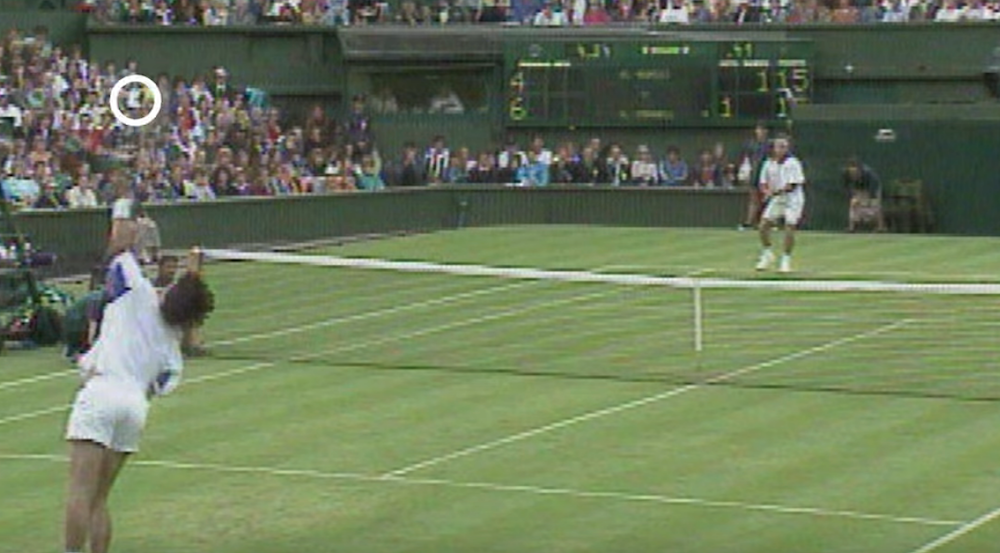
2. Prediction
From the point of impact, your brain draws an imaginary line to where it believes the ball will be in the future creating imaginary fixation points along the way.
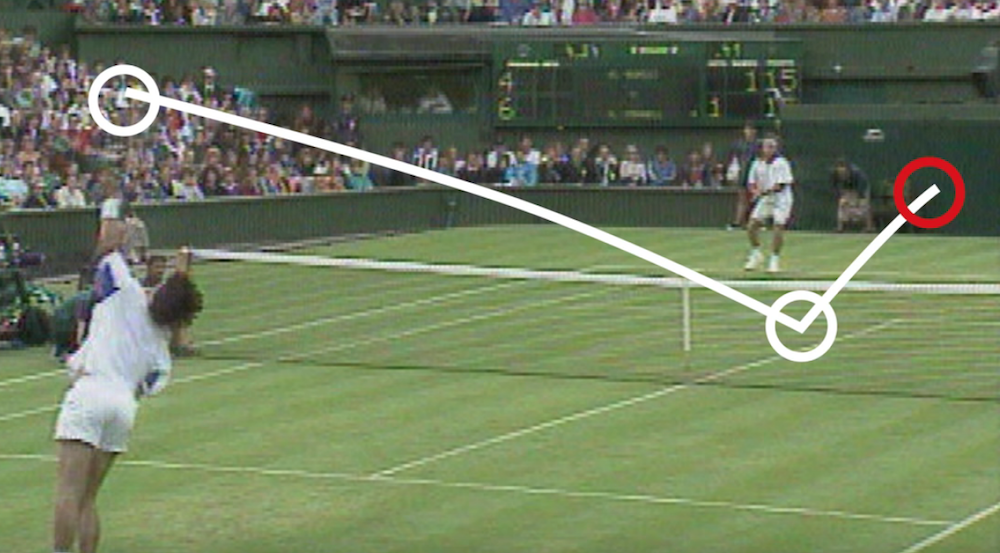
3. Action
Now your eyes and brain are able to track the ball along this line to the imagined fixation point where it anticipates you’ll make contact. This allows you to prepare your stroke and start moving before the tennis ball arrives.
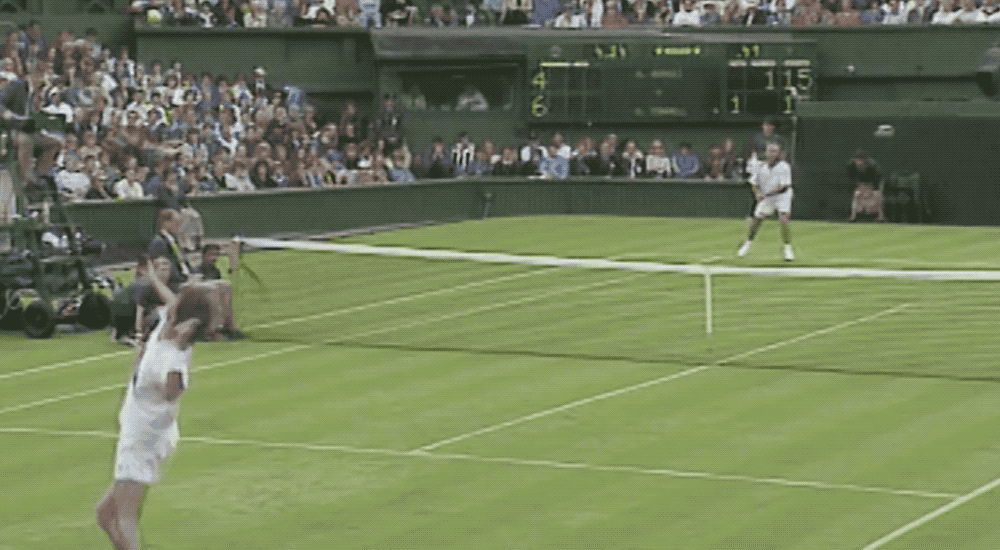
I know this all sounds complicated but the good news is you are already doing this. The Action Observation Network in your brain is doing the heavy lifting. You are probably just not doing it very well.
This is where practice comes in….
How to practice tracking the ball and predicting your opponents shots.
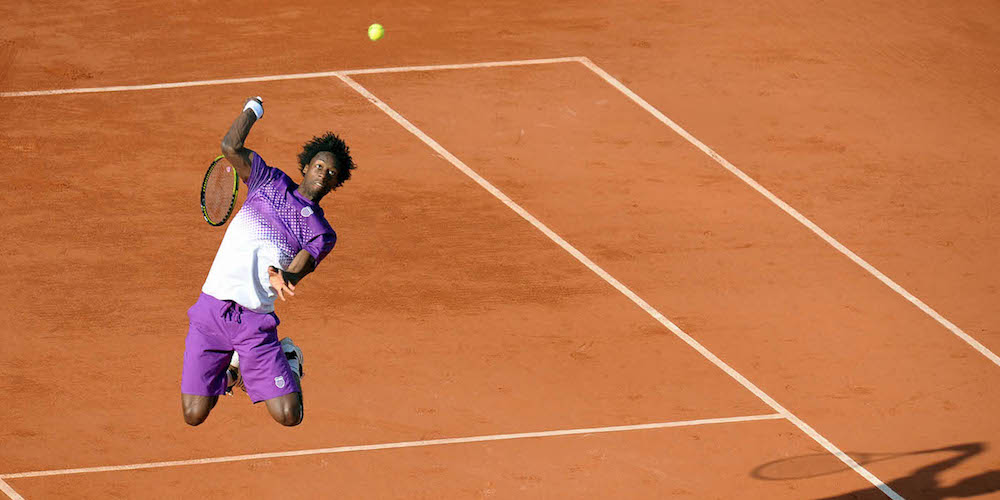
Photo: Roger Parker
As you now know “watching the ball” in the traditional sense is futile. Instead you want to train your brain, eyes, and body to get better at predicting.
To do this you need to understand that the objective is to reduce “thinking time” during points. Paradoxically the only way to do this is to think more during practice.
Unfortunately there are no shortcuts here. It requires a lot of training and mental preparation to master. But once you start to internalise the lessons it’ll become natural.
In the beginning create a list and work on one thing each practice session. What you should be aware of and watch for on the tennis court:
- Your opponents body language
- Patterns in their opponents body movement
- What spin the ball has (topspin, slice, flat)
- The ball trajectory (high, low, etc.)
- The speed of the ball coming at you
- How the ball is moving through the air
- Which way the wind is blowing
- The distance the ball has to travel
- Where the ball is going to bounce
- How the ball is going to bounce (high, low, etc.)
- Your court position in relation to the ball and opponent
With this list in hand it’s time for some focused and deliberate practice sessions.
Before each you step onto the tennis court pick one thing to focus on. Then concentrate on keeping this in your mind and consciously pay attention during rallies.
With practice it’ll become easier and more natural. Once you feel like you’ve internalised the point you’re working on, move on to the next one.
Then repeat, repeat, repeat…
With time and practice each of the above points will sink into your subconscious and start to feel natural. Eventually you won’t need to think about them at all.
Once internalised your brain will do this automatically allowing you to prepare, plan, react, without much conscious thought.
You’ll quickly see improvements throughout your tennis game. Your reaction time will improve, you’ll get to more balls, hit the ball cleaner, and sometimes feel like you have a sixth sense on the court.
The end result is a better forehand, backhand, volley, overhead smash and serve.
Now you have more time to think about the tactics and strategy you’ll need to defeat your opponent.
Summary and tips.
How to watch the ball like a professional tennis player:
- Understand that visually focusing on the ball at all times is impossible.
- You don’t need to try and see the tennis ball at contact point.
- Keep your head still but relaxed.
- Create a list of things to watch for on court.
- Concentrate on practicing one thing at a time.
- Once you’ve internalised a technique move on to the next.
- Repeat.
Return to this list before a tennis session if you need a quick reminder.
You might also like…
- Tennis Forehand Technique: Straight Arm vs Bent Arm
- The Correct Head Position for Better Tennis Technique
- Tips and Tactics for Playing Tennis in the Wind
- How to Stay Hydrated on the Tennis Court
- Tennis 101: The 6 Basic Strokes Explained Step-by-Step
If you enjoyed this post please sign up for my newsletter. It’s where I share member exclusive content not found anywhere else. Including interviews, my favourite gear, health & fitness exercises, tennis tips and more. Sign up here→



